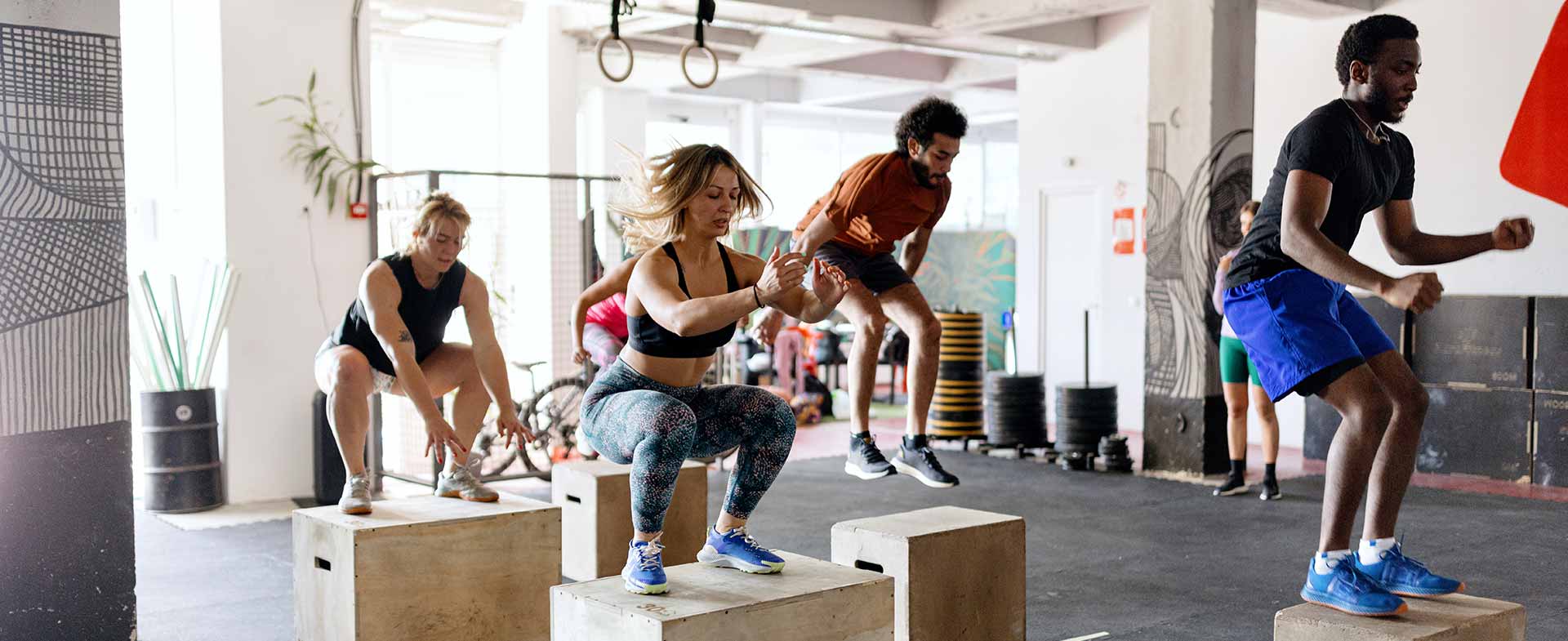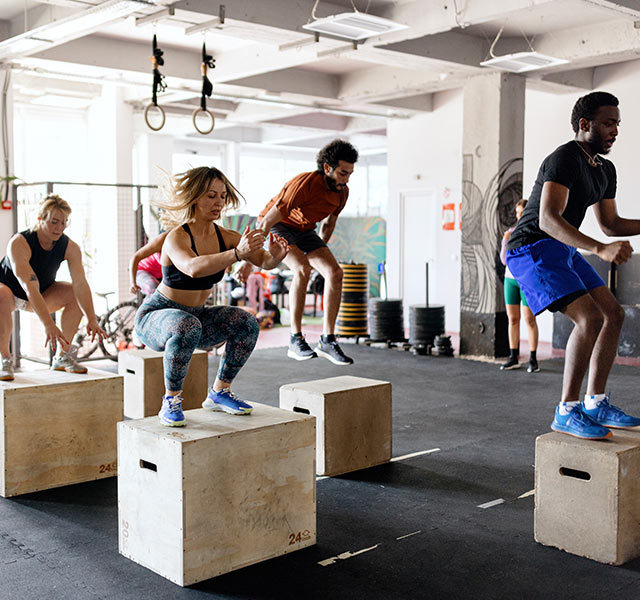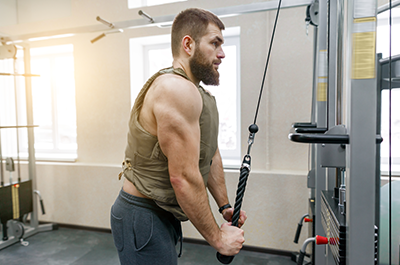One of the best ways to improve your fitness game is by incorporating childhood pastimes—hopping, skipping, jumping—into your weekly routine. Dubbed plyometrics, these activities use explosive motions to build power, strength and performance.
"Unlike typical strength training exercises designed to build muscle mass, plyometric training involves rapid-fire movements that increase speed and muscle power, along with improvements in stair climbing," says Shingo Matsubara, an athletic trainer at Henry Ford Health. "And you'll still see improvements in muscle strength. You might do a series of hops, skips and jumps like jump squats or one-legged hops. Or you could jump up onto a sturdy box or bench, over cones, or in and out of boxes drawn on the ground, as you do in hopscotch. Every time you land from a jump, your muscles stretch to power your next move. Over time, the combination of stretching and contracting your muscles whips them into shape."
What to Consider Before Adding Plyometrics to Your Workout
Matsubara shares a few things to keep in mind before trying plyometrics:
- Consider your goals. Plyometrics can boast sports-training efforts, since it improves the function of your muscles and tendons, allowing you to jump higher and hit harder. A bonus: stronger tendons mean better balance and fewer injuries. Whether you’re trying to step up your basketball game or catch yourself during a fall, plyometrics help prepare your body to react fast. In fact, low-intensity plyometric training is great for seniors.
- Get clearance from a doctor. Plyometrics is a high-intensity activity, so it’s not suitable for people who have joint problems or prior injuries. Even if your joints are trouble-free, it’s a good idea to talk to your doctor before jumping around your living room. If you have heart disease, high blood pressure, diabetes, or are overweight or obese, your doctor might recommend a lower-intensity routine.
- Start slowly. Before diving into a full-blown plyometric routine, add a few low-impact moves to your regular workout to build a solid foundation and help prevent injuries. Warm up with some light jogging and then try some simple hopping. A good starting point is 75-100 total foot contacts per session (jumps, hops and skips) one or two times a week. Then you can build up to 200-250-foot total contacts. The key is keeping it low and slow to start.
- Watch your technique. If you don’t perform plyometrics properly, you could put more stress on the joints, knees, ankle and hips. Your best bet: Before you get started, work with an experienced trainer so you know how to safely jump and land. A trainer can even build a personalized plyometric workout for your specific goals.
- Don’t skip upper body activities. While plyometric workouts don’t typically target upper body strength, you can add medicine-ball throws and plyometric push-ups for a more balanced, full-body workout. You can even throw a medicine ball at a wall to build power in your arms.

Go Where The Pros Go
Plyometric Movements To Try
- Squat jumps: Stand with your feet shoulder width apart, squat down and jump as high as you can. Land softly toe to heel with your knees slightly bent, then squat and quickly jump up again.
- Power skips: Skip just like you did as a kid but put more spring in your step by lifting your knee as high as you can with each skip.
- Tuck jumps: Stand with your feet shoulder width apart. Jump as high as you can into the air, pull your knees as high as you can. On the way down, straighten your legs and land softly on the balls of your feet.
- Box jumps: Stand in front of a sturdy box or bench; choose something high enough to be a challenge. Jump onto the box and immediately back down to the same position. Then repeat. Perform the jumps as quickly as possible.
- Plyometric push-ups: Get into a standard push-up position, lower yourself to the floor and push off with enough force that your hands leave the floor.
- Jump rope: Start with 30 seconds – 1 minute per set, for a total of 2-5 sets.
"Keep in mind that plyometrics aren’t an everyday activity," says Matsubara. "Think of it as a solid strategy to take your fitness to the next level. Whether you do an entire workout based on plyometric movements or incorporate a few jumping activities into your regular routine, you’ll notice a spring in your step post-plyometric training."
Reviewed by Shingo Matsubara, MA, AT, ATC, an athletic trainer at the Henry Ford Center for Athletic Medicine.



